Florida Birding Near Orlando
This article is about birding in Florida, where I will share my birding photography techniques and discuss some of the best birding spots in Central Florida, near Orlando. The below pictures are from my most recent trip to Orlando – the best bird images can be found in my Bird Gallery.
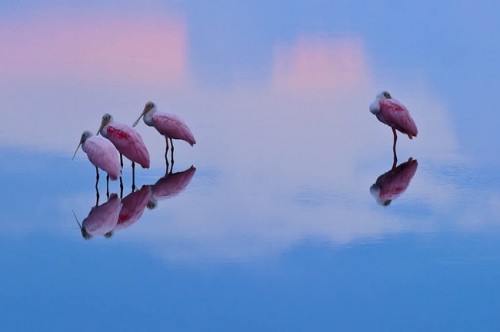
Florida is a birder’s heaven. So many birds, so much variety, especially during migration periods. I try to visit Florida at least once a year and every time I go there, I visit certain spots that have become my favorite ones. Let’s go through those first.
1) Best birding spots near Orlando
If you are planning to visit Florida for birding, definitely check out the following locations:
Gatorland – my #1 most favorite spot for birding. Although this is a primary attraction for seeing the Florida alligators, their Bird Rookery is simply amazing, allowing photographers to get extremely close to birds and their nests. You can find so many different species of birds here, from predators to all kinds of herons and egrets. You don’t even need a long lens to photograph birds here – my 300mm lens at times felt “too long” for photographing birds in flight. The only drawback for me is that you cannot come there before sunrise and stay at sunset, because they open late and close early. There is a photographer’s pass that you can get for extra $, which would allow you to come an hour earlier and stay an hour later, but it is only really useful for short winter days.
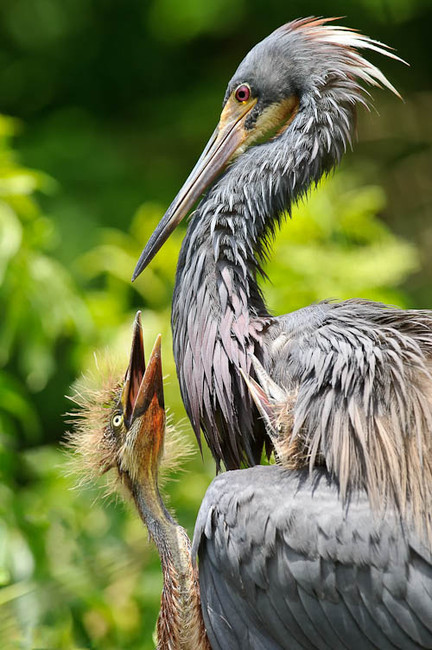
Merritt Island National Wildlife Refuge – any birder will agree with me on this one – Merritt Island is a superb birding spot. The best drive is the Black Point Wildlife Drive, which is several miles long and allows you to photograph birds from your car without disturbing them. Lots of Ospreys here and if you just stand on the shore right by the entrance, you can photograph Ospreys catching and eating fish. But Black Point gets closed after heavy rains for several weeks, so you should first check if it is open or not. The second best drive is the Biolab Drive, which is just several miles away from the Black Point. It is also very long and you can catch plenty of great action there.
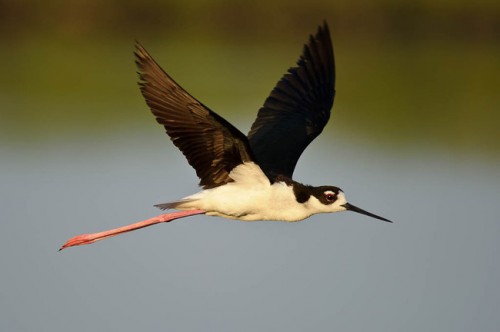
St. Augustine Alligator Farm – the best spot for seeing Roseate Spoonbills. The bird rookery is as good as the one in Gatorland, but it is a little far from Orlando, so I still prefer Gatorland over the Alligator Farm. Lots of bird species here, you will not be disappointed!
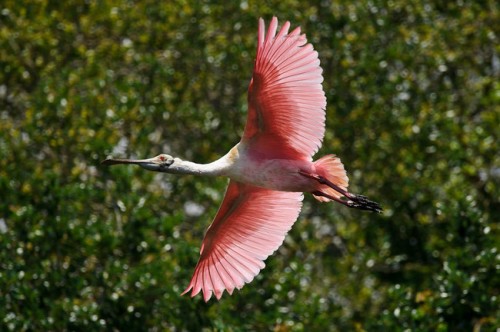
Orlando Wetlands Park – you should check this place out on your way to Merritt Island. It has lots of bird species that you can photograph from a close distance, but you cannot drive through it, so be ready to hike. If you are there alone, I would recommend hiking in the first loop trail that is only a mile or so long. Other trails might not be very safe because of alligators. Either way, be careful when you are there and watch for alligators and venomous snakes on the trails.
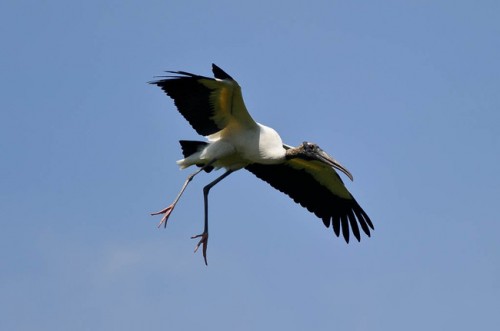
Three Lakes Wildlife Management Area – this one is a gamble. I have been there several times so far and I have only been lucky once, when I photographed bald eagles and hawks from a relatively close distance. Other times it was a frustrating experience and I saw nothing but trees, bushes and maybe a few birds.
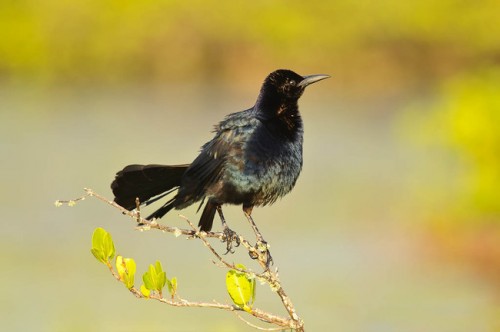
Joe Overstreet Road – near Kissemmee, supposed to be great for photographing all kinds of birds. I was not so lucky during my last trip and did not see much except cranes and cows on this road. Lots of Meadowlarks on the road, but I see too many of them here in Colorado, so I did not really care much about trying to capture them.
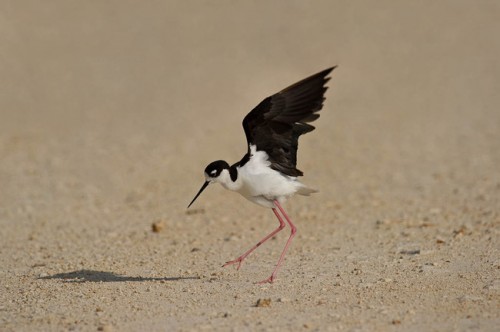
Walt Disney World and surrounding areas – if you are visiting Orlando with your family, definitely take your telephoto lens with you when you visit the park. You will see many different types of birds in ponds and lakes, as well as small birds perched on trees and bushes all over the place.
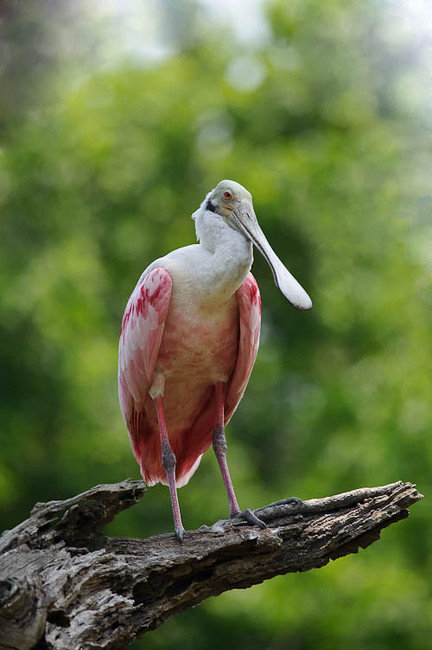
The list of good birding locations near Orlando is much bigger than the above and I am sure there are better spots out there that I have not been to yet. If you know good birding locations, please drop a comment below and share 🙂
2) How to photograph birds
Although I have written a fairly detailed guide on how to photograph birds (which I highly recommend to check out), I wanted to share some other quick tips for successful birding in Florida:
If you are planning to go to Gatorland or the Alligator Farm, leave your heavy super telephoto lenses (above 400mm) at home. I would recommend something like 70-200mm or 300mm lens with a 1.4x teleconverter, if you need the reach for some reason. Since you stand so close to the birds, it might not be practical to walk around with a really long and heavy lens. For Merritt Island and other locations, longer lenses would certainly be more useful.
Instead of pointing your lens down on birds, try to get on the same level with them by sitting or even laying on the ground. Images with busy and ugly backgrounds are never pleasant to look at and keeping your lens on the same level as the bird will make the bokeh look smoother and more beautiful. This is not always practical though and you have to watch out for insects, snakes and alligators that might be all around you.
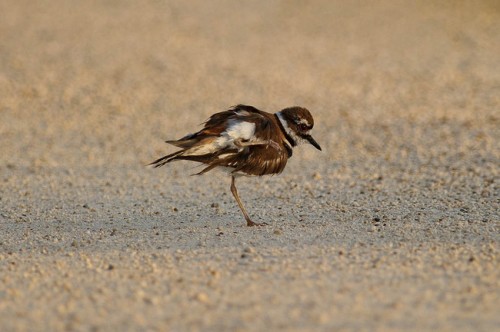
The above image of a Killdeer would have been much better, if I laid down on the ground – the background on the upper side of the image looks too busy.
Get to your location before sunrise and photograph birds very early to get the best light. Do the same at sunset and try to get that beautiful yellow light on the birds, especially in flight (if you can). Harsh afternoon light is never good for birding. Cloudy days are also good for birding, but you will need to keep your shutter speed high without introducing too much noise, which can be a challenge. If you have a DX camera (cropped sensor), keep your ISO below 800 and if you are shooting FX, try to keep it under 1600 or 3200, depending on the sensor. At high ISO levels, feather details start getting lost, which is never good for bird photography.
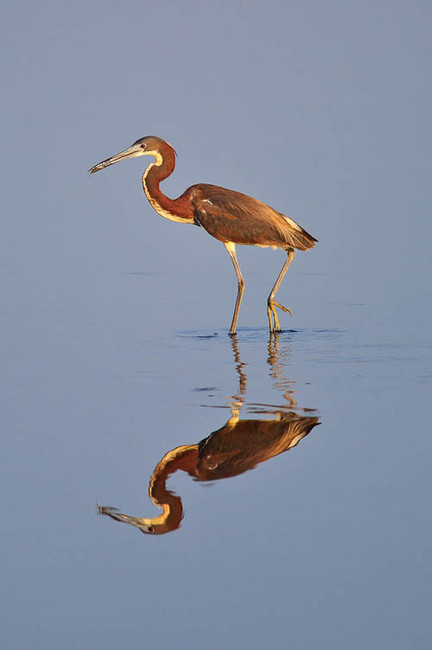
Use a tripod in challenging lighting situations for slow and perched birds that do not get too nervous when you approach them. For birds in flight, try to keep your shutter speed above 1/1000th of a second. I would recommend turning “Auto ISO” on with minimum shutter speed set to 1/1000th or higher and maximum ISO set to 800-3200.
Get a Better Beamer with a good flash if you don’t have one – it certainly helps to eliminate dark shadows. You have to be careful when using flash for birding though, since you need to know when to use it and how to use it. Get familiar with high-speed sync, flash power and flash subject distance to get the best results. Too much flash can ruin your images too.
Watch for still water and try to capture reflections. Some birds can sit in the same spot for a long time and the water around them gets very still, making a perfect “mirror” reflection.
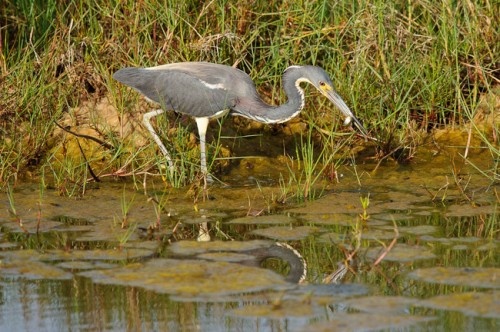
When approaching birds, make sure that they are comfortable with your presence. In locations like Gatorland, birds generally don’t care about people, but in other places they might be too nervous. If a bird is not worried about you, it will act naturally and you might see some great action if you just wait and watch. If the bird is looking at you for an extended period of time and acts irritated as if it wants to fly away, you might be standing too close. Before making any further moves, try facing another direction and look away for a little bit – this might calm the bird down a little (especially predators). Some birds just don’t like it when you directly look at them.
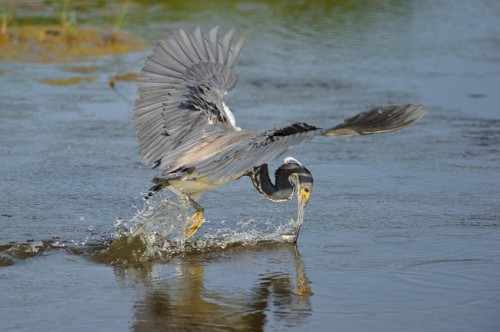
If you are standing too close to a bird, you might want to increase your aperture to increase the depth of field. If your depth of field is too shallow, parts of the bird can appear “out of focus”. But be careful about increasing aperture too much, because it might negatively impact the bokeh.
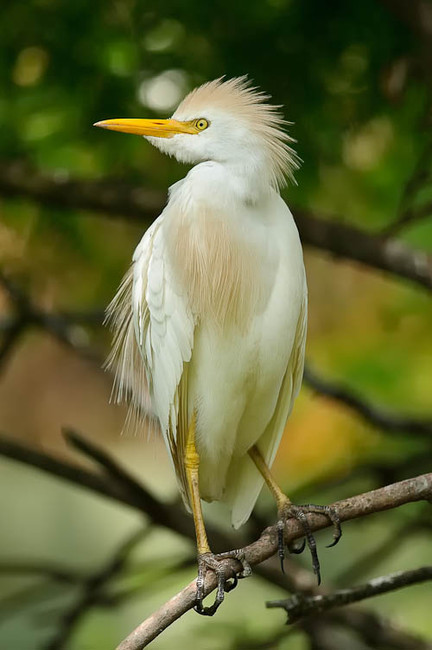
All of the above images were captured with Nikon D3s and Nikon 300mm f/4.0 AF-S lens + 1.4x TC.
















.gif)





